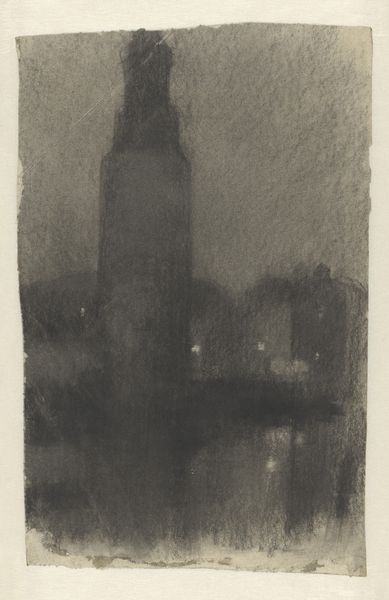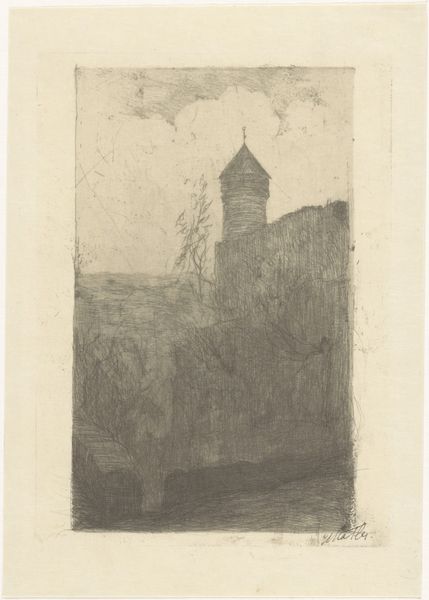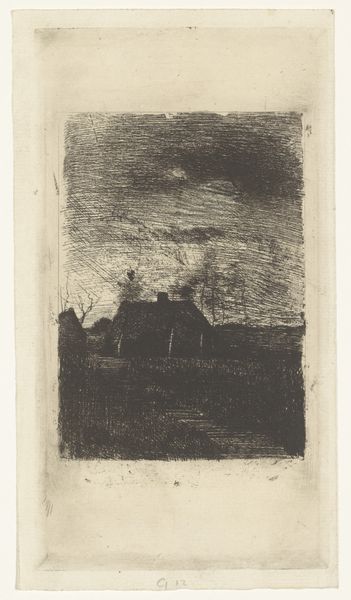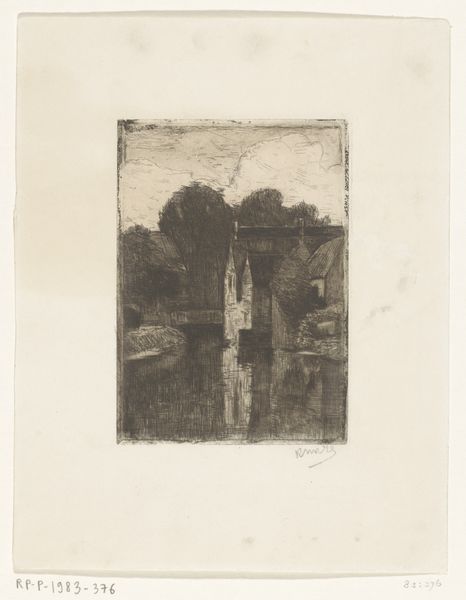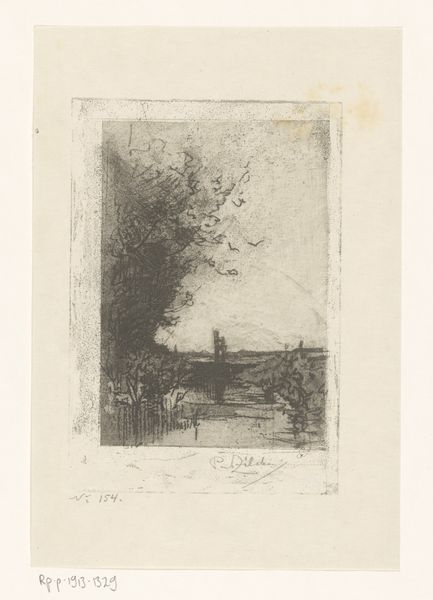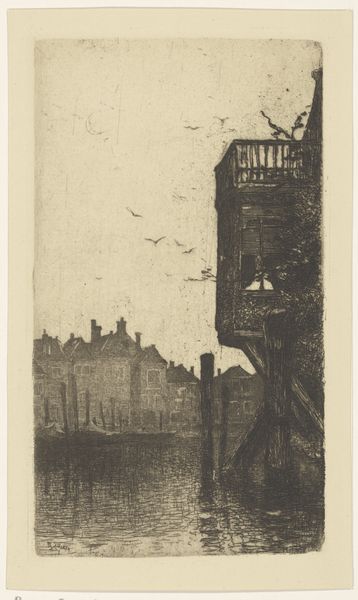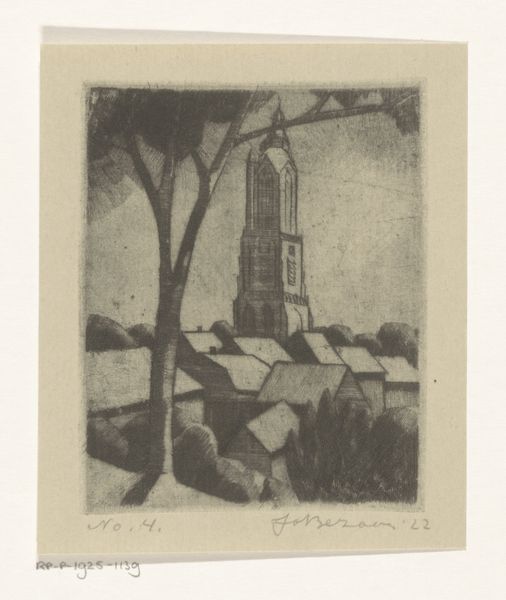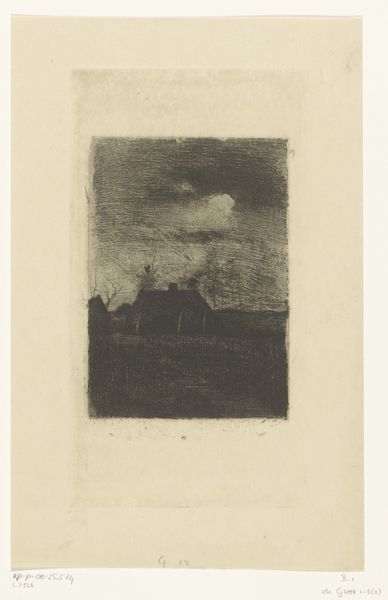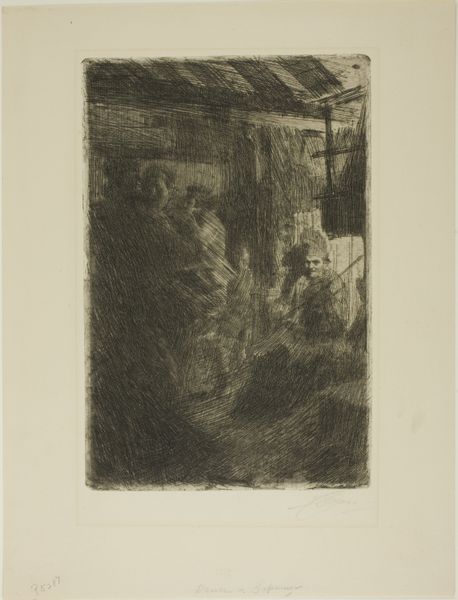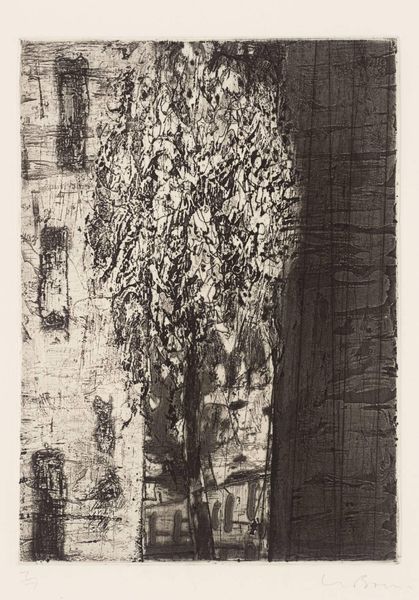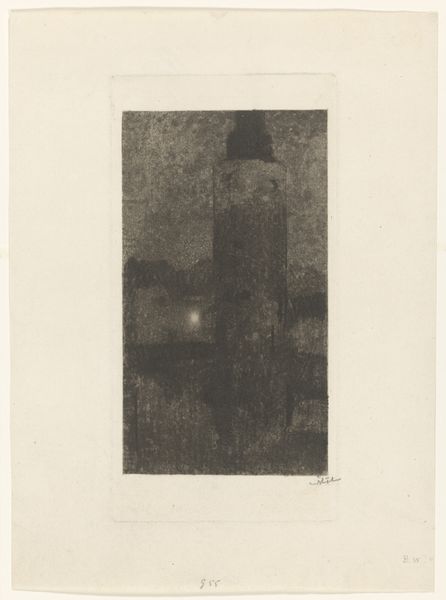
Dimensions: height 198 mm, width 140 mm
Copyright: Rijks Museum: Open Domain
Curator: Look at this print, titled "Grote of Onze-Lieve-Vrouwekerk in Dordrecht," an etching created by Etha Fles between 1867 and 1936. Editor: Ominous, wouldn't you say? The heavy blacks and the dense hatching lend the entire cityscape an unsettling air, as if caught in the midst of a storm. Curator: Indeed. Observe how Fles employs a stark contrast in values to sculpt form. The towering church dominates, a black monolith against the swirling sky. There is a real dynamism here through line work. Editor: And the strategic blurring around the edges? Notice how it diffuses the cityscape and it suggests an Impressionistic desire to capture a transient moment rather than architectural details. Dordrecht presented, not documented. What role might such artistic renderings play in city identity, I wonder? Curator: Fles expertly utilizes the etching process to render varied textures. See how she coaxes velvety blacks and delicate greys to convey atmospheric perspective, diminishing detail into soft suggestion in the lower plane? Editor: Precisely! That textural variation amplifies the drama. Light barely glances off surfaces. Consider this in the context of urbanization—the church, traditionally a locus of community, now a dark, brooding presence in an evolving social landscape. The weight of its shadow on the city both literal and perhaps allegorical? Curator: The composition, moreover, focuses the eye inexorably on the church. Fles gives us only enough of its immediate surrounding to orient us. All lines rise to, all values darkened by, that one monumental construction. Editor: I'm curious about its accessibility as public imagery, of who this was produced for and how Fles contributed to debates about architectural and civic importance through printed reproductions like this. It almost begs the question—was this art of social commentary, capturing the looming nature of the church over its town? Curator: One can certainly feel that tension; I suspect closer study of the burin work would reveal more subtleties than are apparent. Thank you for offering a way to perceive Fles' cityscape on yet another important layer. Editor: And thank you. By bringing forth discussions of technique and social context, we start appreciating it far more deeply than surface impressions.
Comments
No comments
Be the first to comment and join the conversation on the ultimate creative platform.
